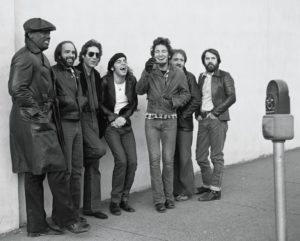Bruce Springsteen and the E Street Band provided the soundtrack of my youth. There was something magical about the chemistry and charisma of that ensemble. I felt they were a tribe of brothers whose bond seemed unbreakable.

In Bruce Springsteen’s recently released autobiography titled Born to Run he talks about what went into forming this memorable band, the E Street Band. As he pondered who should be in the band and his vision of what he wanted the band to be and represent, he first thought about all the great rock bands he knew. He knew they coalesced around a clear persona, a compelling story and a dream so powerful that it could stir emotions and camaraderie between the performers and the audience.
For teams to be successful, there must be an overarching vision that captures the imagination and motivates the work ethic in a way that produces joy and meaning.
He wanted good musicians, friends and personalities he could bounce off – he wanted the “neighborhood block.” He said, “You don’t need the best players, you need the right players.” All those players ultimately click into something unique.
Successful teams know each other, work hard, laugh together and inspire creativity.
He also knew that having a band of brothers wasn’t enough for long term sustainability.
“Democracy in a band can be a ticking time bond,” says Bruce Springsteen. He decided early in his career that it would be his band and he’d make all the final artistic and business decisions. Drummer Max Weinberg once stated, the E Street Band members are not Springsteen’s equals. “This is not the Beatles.”
In any team, any work group, someone needs to have the “D” – the final decision-making authority.
High performing teams can relate. You aren’t successful simply because you have top talent. You do well because there is good old fashioned chemistry and shared values. If you adapt Bruce’s playbook to your work teams you might translate his philosophy to say:
- Look for talented individuals who you actually like (and enjoy hanging out with).
- Gravitate to team members who bring out the best in each other and complement strengths and minimize limitations.
- Make sure there is decision-making agreement (understand and accept who has the “D”)
- Appreciate the unique contribution each team member makes. *
- Know and nurture the story your team must tell (a long history of collaboration; from the neighborhood; coalesced around a start-up; eclectic backgrounds, etc.) The team’s story bonds them and holds them together through shared sensibilities.
*Bruce, describes in detail what each member of the E Street Band brought to the table. He captured the essence of each player’s strengths and limitations and how those merged to create a singularly fine band and brand. As I read the descriptions of each band member I thought – he knows his band members inside and out and appreciates their individual gifts and forgives their flaws.
Here’s a New Year challenge for us all. Imagine you will have an opportunity in 2017 to pay tribute to each of your team members at a celebratory event – what would you say? Pay exquisite attention to your team and its members, take notes, and get ready to tell the story.
In describing his band, Bruce recalled, “We struggled together and sometimes with one another. We took care of one another. In the end, we kept faith in each other.”






